Priorities change as we enter different phases in life. The good ol’ hot hatch is the weapon of choice for the young and dangerous, before a premium-badged sport sedan becomes the dream reward for that big career break. Those who are less enthusiast and more practical have their own automotive ladder to climb – think Myvi-Vios-Camry or the Mazda equivalent illustrated by this nice timeline video. More or less.
Now, this writer may be a little more stagnant than Joe Corporate, but even I had the impure thought of a fast but plush luxury express; one to chariot you from A to B, back to A again before heading across town to C for dinner, with minimum sweat.
You know what I’m talking about, those days when the clock is a cheat and other motorists are conspiring with traffic lights to impede your progress. And of course, that motorcycle.
After four manuals (three are still around), surely I have paid my dues to the Stick Shift Club and earned the right to point and shoot, no? This recent mood has also led to my revaluation of the sport sedan. Key question: What makes the ideal premium compact exec?
Like a psychic, Audi reserved a slot for us at the international media drive of the all-new Audi A4. Driving the B9 around Venice last week has helped me see clearer, and here are our findings.
Before you even ask, the Audi A4 you see here is not another facelift of the long-serving B8 but an all-new model – every body panel is fresh and there’s a revised Modularer Längsbaukasten platform beneath. The MLB Evo, which is for longitudinally arranged front-engined models, also underpins the latest Audi Q7 that surfaced earlier this year.
The B8 was one of the longer cars in its class, and this fifth-generation A4 is slightly bigger. At 4,726 mm, the B9 is 25 mm longer than before, and 12 mm of the added length goes into the wheelbase, which now measures 2,820 mm. Height has been maintained, but the Audi is 16 mm wider (1,842 mm) than before.
For perspective, the F30 BMW 3 Series, which isn’t that compact anymore, is 102 mm shorter and 31 mm less wide than the new A4. The Audi’s wheelbase is 10 mm longer, too. Ingolstadt’s latest is also superior in size compared to its rival from Stuttgart – 41 mm longer and 32 mm wider than the W205 Mercedes-Benz C-Class to be exact.
It may be rather large, but the A4’s appearance is far from pudgy. The proportions of the B8 have been carried over in evolutionary fashion, but the suit that Wolfgang Egger tailored (the former Alfa Romeo design boss has since moved to Giugiaro and left the studio late last year) is slim fit and sharp, with crisp lines and clean surfaces.
The Audi’s impressive sartorial sense is embellished by eye catching jewellery in the form of a sharp-edged single frame grille flanked by eyes (LED and Matrix LED available) that are distinctive in both shape and daytime running light design. Just like how the B8’s string of DRLs started a craze for LEDs back in 2008, the B9’s double-brow is an instantly recognisable signature.
Like the face, the A4’s rear end gets an effective nip/tuck. The characteristic boot arch has been retained but the lights are slimmer and sharper, creating an effect that is larger than the change itself.
The net result is a very handsome and masculine saloon with a more formal image than the BMW and Mercedes, a stark contrast with the swoopy shape and liberal lines of the latter, which can appear fussy. I’m far from stylish, but can imagine the classy Audi as an extension of the sharp-suited modern man, or that male in the dark perfume ad. Looks are subjective of course, and each is desirable in its own way.
Boring? Perhaps Audi could have done a bit more to avoid facelift accusations, and no one will be calling this design avantgarde for sure, but the B9 should be enduring. The B8 looks pretty youthful for a seven-year old design, and there’s no reason why this evolution won’t age similarly well.
It has to be noted that our test unit’s brooding good looks is helped by an S line exterior package, 19-inch Audi Sport cast aluminium wheels in five V-spoke design and the brilliant crystal effect Macaw Blue paint. You will see in the gallery below that not all A4s look so fetching.
The new A4 may have grown in size, but it’s significantly lighter than the B8. Depending on variant, weight reduction can go up to 110 kg thanks to the use of hot-formed high-strength steel in the body structure, and aluminium for exterior panels including the roof.
Also rich in Al are components for the front suspension, which shave up to eight kg. The new five-link rear suspension (in place of the old trapezoidal link, saves five kg) and a new electro-mechanical steering (3.5 kg less) also contribute to the cause. Inside, the seats are up to nine kg lighter; while new carpets, an aluminium brake pedal and foamed defrost ducts in the air con shave another four kilos.
Audi is also very proud of the new A4’s aerodynamics. The B9’s drag coefficient value of 0.23 is class leading, and is derived from a range of subtle measures, including the outer lines of the air inlets that integrate additional openings (they guide some of the airstream over the wheel well), wing mirrors positioned on the door sills (narrow stripes enhance aeroacoustics, amber light below it is a unique blind spot assist method), narrow trim on the rear windows and a largely smooth underbody.
For the latter, the underside of the engine compartment is sealed, the wishbones on the rear axle are enclosed, and small spoilers guide airflow at various zones, including under the wheels and at the tank. The flat underbody also keeps rear axle lift low.
Both the weight reduction and slippery shape contribute to the A4’s fuel economy, which is lower by up to 21%, Audi says. Not interested in proving that, we take their word for it and enjoy the other benefits on offer.
It doesn’t take long for one to notice the B9’s impressive rolling refinement and cabin insulation compared to its peers; just a few turns and a short stretch of the motorway sufficed for us. Coupled with a drivetrain that does its work in an efficient and silent manner, the A4 proved to be a great cruiser for our drive north towards the hills from Aeroporto Marco Polo.
We had the 2.0 TFSI quattro for most of the day as it is likely to reach our shores early next year. The most powerful petrol variant available at launch, it packs a strong 252 hp and 370 Nm of torque from 1,600 to 4,500 rpm. Paired to a seven-speed S tronic automatic gearbox and AWD, the 2.0 TFSI completes the benchmark 0-100 km/h sprint in just 5.8 seconds before hitting the electronic limiter at 250 km/h.
That’s good enough to eclipse top four-cylinder turbo classmates 328i (245 hp, 350 Nm, 5.9 sec) and C 250 (211 hp, 350 Nm, 6.6 sec) in the Malaysian context, as well as match the 330i LCI and C 300 in the wider arena. But what stood out most for us was the free-spinning nature of the mill. The impression of friction or resistance, in feel and sound, is kept to a minimum – F30 owners in an idling A4 would be impressed even before take off.
The fast response and shifts of the dual-clutch ‘box complements the engine well. Note that the Multitronic CVT gearbox has been phased out and except for the 3.0 TDI, which gets an eight-speed Tiptronic, automatic means S tronic for the B9. While the stepless auto in the B8 1.8 TFSI wasn’t as dreadful as the idea of it, this is a welcome development nevertheless.
A new combustion method is employed, one with shorter compression (ratio increased from 9.6 to 11.7) and longer expansion phases as well as increased compression designed for partial load, the most common mode of operation. The intake valves close much earlier than usual – in connection with increased pressure in the intake manifold, this reduces throttling losses when the engine breathes.
Updates to the engine include the integration of the exhaust manifold into the cylinder head, the rotary-valve model for thermal management, Audi valve-lift system (AVS) for the outlet valves, the electric wastegate of the turbo and dual fuel injection. At partial load, indirect injection in the inlet manifold supplements FSI direct injection. Injection pressure has been increased to 250 bar.
We also had a go in the base petrol model, a 1.4 TFSI with 150 hp and 250 Nm. There’s no 1.8L in the B9 family, so this small turbo engine could potentially make an appearance here as an entry-level variant. It’s either this or an “Ultra” version of the 2.0 TFSI with FWD, 190 hp/320 Nm and claimed FC of 4.8 litres per 100 km. Should the 1.4L arrive, expect an S tronic auto in place of our test car’s six-speed manual gearbox.
A manual new car will always be a novelty for road testers from our region, where the stick shift is seen as a poor sibling. I certainly did not expect to DIY in an Audi, at a global media drive where often only the top variant with all bells and whistles is shown, but there are firsts for everything.
In truth, Audi’s new magnesium-cased, 16 kg lighter manual ‘box isn’t the most satisfying stick in town – the action is smooth and easy, but the very light clutch is vague in biting point. A slightly shorter throw would have been good, too. But it’s a manual, and we’re happy just to be able to sample it.
The 1.4 TFSI’s performance is a little lacklustre at low revs, and less flexible than I’d have expected, even after taking into account that we came from a car with 100 horses more. It’s a willing partner though, and working it is no torture. Once you’ve build up some speed, the 1.4 feels swift enough. While not effortlessly rapid (working the engine harder means you’ll hear more of it), the above-mentioned refinement plus points generally apply. An acoustic windscreen is standard across the board.
The A4 is still not a “driver’s car” in the traditional sense, but it’s dynamically better than the outgoing model and a pleasant enough steer. It’s not brimming with feedback but the steering feels more natural than before. Dynamic mode on the Audi Drive Select system adds a dose of synthetic resistance to the helm, but Comfort is usable this time around (not always so) and is actually good enough to be my personal default.
Stringing the grippy Audi along curvy B roads is now a more fluid experience thanks to suspension that’s more yielding (Comfort spec with active dampers, a 23 mm lower Sport is available). Italian roads are child’s play compared to our tarmac, but my butt suspects that it will ride better here as well.
The same scientific rear instrument also reckons that the 3 Series is a better drive. BMW has been making sport sedans for 40 years now, and they’ve never failed to include that sense of “rightness” in the 3er’s response and controls. Not Audi’s specialty, so it’s good that they didn’t try to “do a 3 Series” with the B9.
Thankfully, otherwise we would not have this fantastic interior that shades all in design and quality. Gone is the previous-gen fascination with buttons and red illumination, and in comes this minimalist dashboard.
The B9’s cockpit is a slim fit version of the Q7’s, both sporting air vents that span the width of the dashboard. Some elements are shared, which adds value to the cheaper car. There’s no traditional vertical centre stack, just a large 8.3-inch central screen, air con controls and a strip of buttons facing the driver.
All else have been compressed into the MMI cluster ahead of the gear lever. Also available is Audi’s Virtual Cockpit, a 12.3-inch screen sitting in the instrument cluster. As seen in the third-gen TT, VC shows you all that you need to know and more, and its layout is selectable. The digital meter panel, head-up display and hi-res central screen (navi with satellite image is nice) adds tech appeal to the sophisticated ambience.
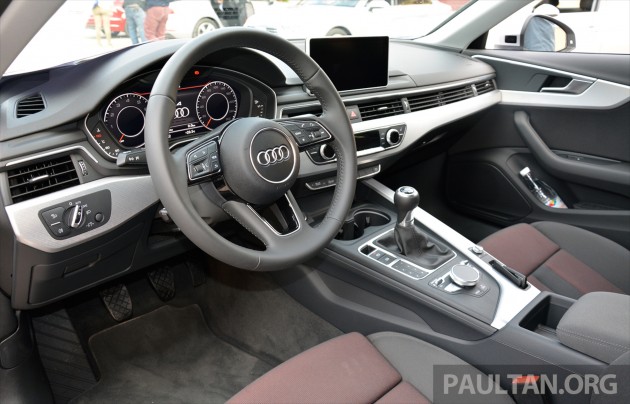
You don’t need to be a techie to appreciate the cool frameless rear view mirror, special cubby for the key fob, temperature readouts in the knob itself, touch-sensitive buttons for the AC, Bang & Olufsen “3D” sound system (755-watt, 16-channel amp, 19 speakers) and the natural oak inlays in our 2.0 TFSI. The unpolished trim is lovely, and that’s before you feel the grain of the wood and tap it. The materials and tactility of the controls ooze quality, and no touch point is left out.
Atlas beige with grey wood is a combo with warmth, but the 1.4 TFSI’s black cabin will be more representative of the typical Malaysian spec A4 (we are a conservative lot, the carmakers say), minus the fabric seats and stick shift of course. It’s more business-like in here, and the aluminium trim is cold to the touch. Much better than fingerprint-baiting piano black or smooth “satin” plastic, for me.
There’s more space for all onboard, too. Shoulder width and head clearance for the driver and front passenger have increased by 11 and 24 mm. Interior length is up by 17 mm, while there’s 23 mm more rear legroom. All the quoted figures are class leading. My hair no longer brushes the rear headlining as it did in the B8 and rear passengers benefit from the three-zone air con. If you’re one of those who like the idea of a German compact exec but hanker for more space, the A4’s cabin might just cut it.
Back to the question of what makes the ideal premium compact exec. Many are drawn to the 3 Series, the segment’s traditional flag-bearer and default choice, while Merc’s design revival is winning the brand younger customers. I’m a fan of the BMW for its intrinsic driver appeal, latching on to the promise of a great drive when the opportunity presents itself.
Unfortunately, reality is is nothing like a Zoom-Zoom ad, and many hours are spent in the urban crawl and cruising on the highway. It’s about getting there fast and unflustered, and this is where Audi’s smooth operator slips in. The B9 persuades with A8-grade aeroacoustics, good ride comfort and a drivetrain that’s refined and efficient in power delivery. The improved steering and suspension means that the A4 is now a decent drive, and it’s a handsome chariot to arrive in.
The A4’s case is strong even before we take into account the pièce de résistance, that gem of an interior. The dashboard is a mix of high-tech and high-style, and its quality and finishing is flawless. That, and the comfort on offer, are things that one can appreciate all day, everyday, as opposed to the full-blooded drive whenever a blue moon appears.
Looking to sell your car? Sell it with Carro.





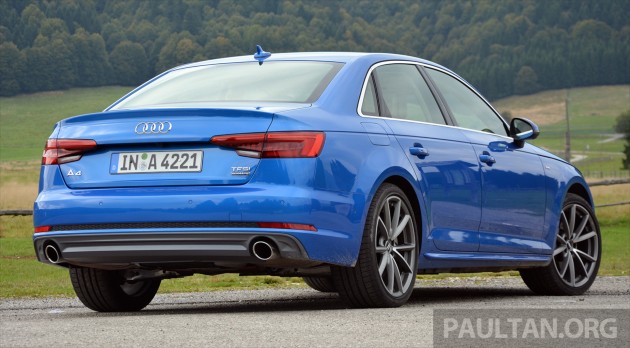

















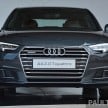
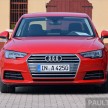
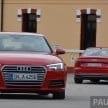
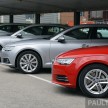
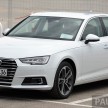
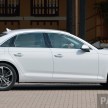
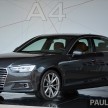
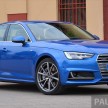
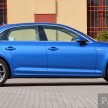
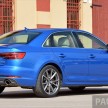
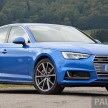
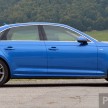
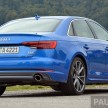
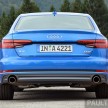
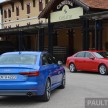
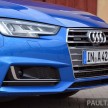
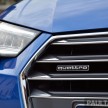
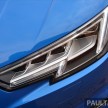
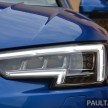
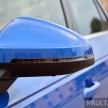
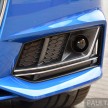
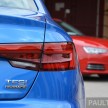
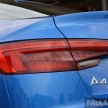
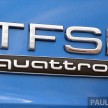
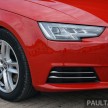
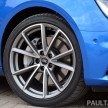
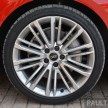
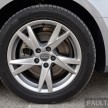
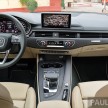
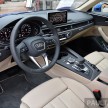
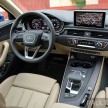
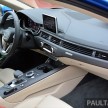
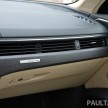
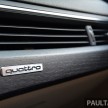
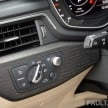
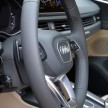
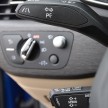
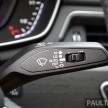
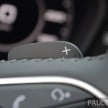
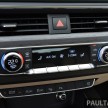
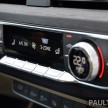
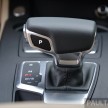
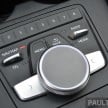
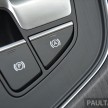
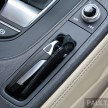
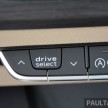
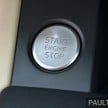
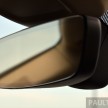
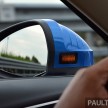
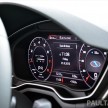
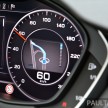
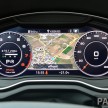
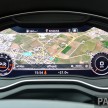
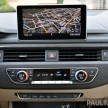
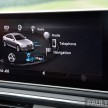
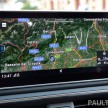
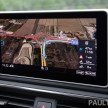
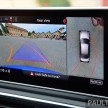
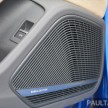
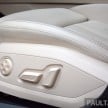
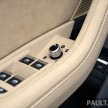
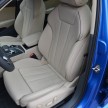
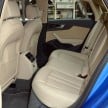
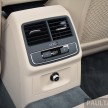
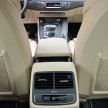
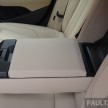
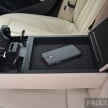
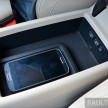
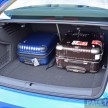
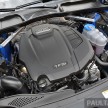
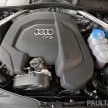
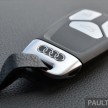

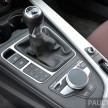
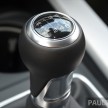
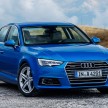
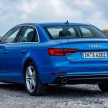
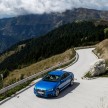
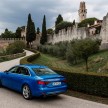
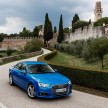
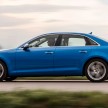
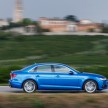
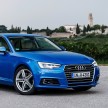
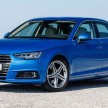
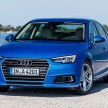
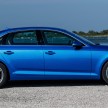
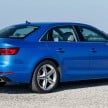
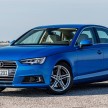
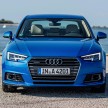
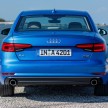
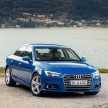
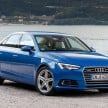
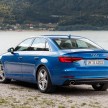
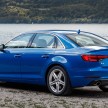
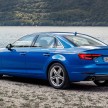
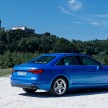
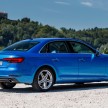
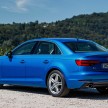
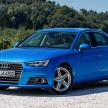
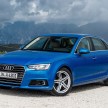
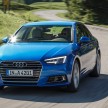
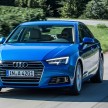
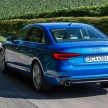
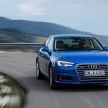
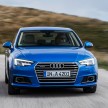

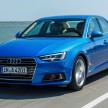
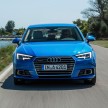
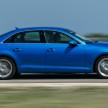
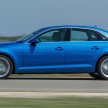
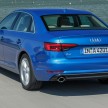
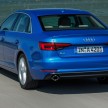
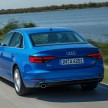
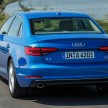
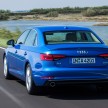
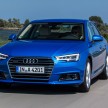
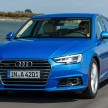
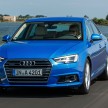
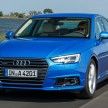
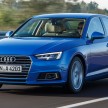
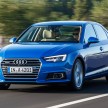
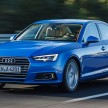
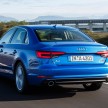
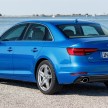
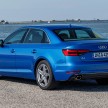
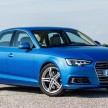

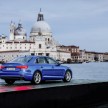
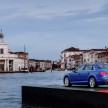
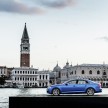
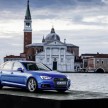

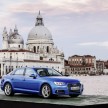
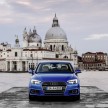
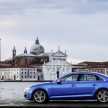
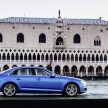
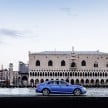

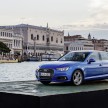
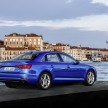
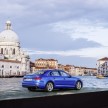
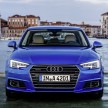
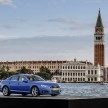
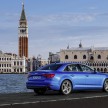
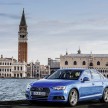
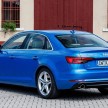
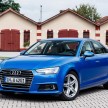
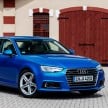
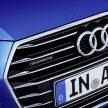
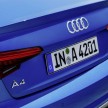
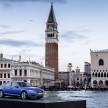
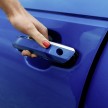
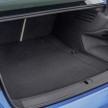
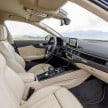
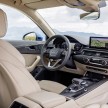
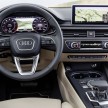
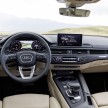
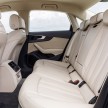
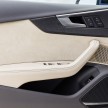
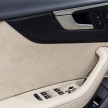
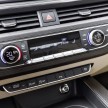
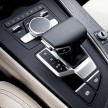
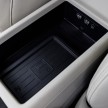
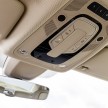
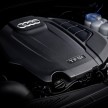























AI-generated Summary ✨
Comments express admiration for the B9 Audi A4's handsome design and high-quality interior, highlighting its refined craftsmanship, minimalistic yet detail-rich cabin, and advanced features. Many appreciate its build quality, interior comfort, and stability, especially in challenging conditions. However, there are concerns about reliability, maintenance costs, and past issues like DSG problems and Dieselgate scandals, with some skeptics wary of trusting VW Group brands. Enthusiasts praise the car’s balance of performance and comfort, comparing it favorably to competitors like BMW and Mercedes, while a few prefer Japanese or local brands for reliability. Overall, the comments reflect excitement about the model's design and interior but include cautious skepticism about brand reputation and ownership costs.